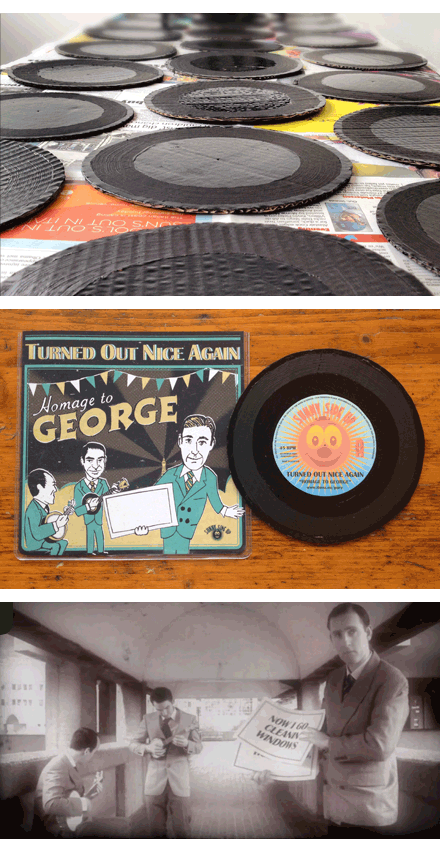Danielle Stagg
Recent Posts
Word of Mouth Marketing: 7 common mistakes every company should avoid
By Danielle Stagg on 21 March 2013
Second Screen: What it means for brands
By Danielle Stagg on 19 March 2013
Second screen society and second screen viewing
Second screen is now an everyday reality - from tweeting comments about BBC’s Question Time to Facebooking during Britain’s Got Talent. About 60% of UK viewers go online while watching TV at least twice a week and one in three does so every day, according to research by TV advertising trade body Thinkbox.
Brands are increasingly looking to build on this phenomenon and some believe that interacting with live TV on a companion device is the next great frontier for social media. According to a study by Brandwatch, 61% of brands are already regularly tweeting before, during and after TV programmes - hoping to improve their brand image by engaging with their followers in current and topical conversations.
Second screen and social media for brands
Twitter’s TV Book which was released earlier this year breaks down the tweeting habits of TV viewers and tells us that of the 10 million active Twitter users in the UK, 60% tweet whilst watching TV and 40% of them mention what they are watching in some way or other. That’s a big social audience – and if a brand can get it right, they can soon increase their social voice and their followers. According to Brandwatch, 17% of the people surveyed said that they felt more connected to brands seen on social networking sites.
Quick facts
- Dual-screen social TV initiatives are the next great frontier for social media, according to some agencies.
- 60% of viewers concurrently watch TV and go online two to three times a week. One in three (37%) do so every day.
- Some doubt dual screening will become mainstream because people often watch TV to relax rather than engage with it. Understanding programme types and content is as essential as understanding audiences. (Source: http://econsultancy.com)
This is clearly not a daunting prospect for a new fashion show on Channel 4’s T4, funded by high street chain New Look, which plans to go further still in its efforts to tap into dual screening. During ‘New Look Style Nation’, which launches on 4th June, viewers will be able to dress virtual models and submit their own designs on a dedicated website, to compete for a job styling the retailer’s ad campaigns. The show will appeal to the chain’s strong youth following (it currently has 100,000 fans on Facebook). The website will also link to the New Look ecommerce site where viewers can buy styles featured in the programme.
Second screen: games, apps and TV
It’s true to say that Social TV is in its early stages and brands are still experimenting with second screen formats, but the idea undoubtedly has a role to play in reinvigorating live TV events and allowing brands to tap into the opportunities therein. While it appeals strongly to a hardcore of users, it remains to be seen how far mainstream viewers will interact with programmes and brands through second screen games and more advanced applications. It’s unlikely that you’ll see your granddad racing online against the Countdown clock whilst tweeting the benefits of a bottle of WKD Blue anytime soon – but you might find him guessing the value of a painting on his Antique’s Roadshow app, even if he doesn’t know how to tweet the nation with the result.
Effective channel marketing strategy: A Guide
By Danielle Stagg on 14 March 2013
Channel Marketing Definition: The management of the routes or 'channels' your product takes to reach its end consumer, and the cultivating of the relationships these journeys entail in order to maximise your sales and brand awareness.
There has never been a more critical time for brands to engage their channel partners as effectively as possible. A long time seen as the ‘poor relation’ within the marketing mix, Channel Marketing is now proving itself as an essential element in a brand’s journey.
Creative B2B marketing communications tools
By Danielle Stagg on 12 March 2013
Here he puts together a list of effective B2B marketing comms tools or ‘formulae’ you might want to bear in mind when communicating with the B2B community.
(B ≠ Boring)
'B' really does not have to stand for ‘Boring’. I can’t see the ‘B2B’ acronym on a brief without mentally adding a word before it and translating it as “(Don’t) Be Too Boring”. Make your B2B marketing communications interesting and fun, even if the subject matter proves a challenge.
(B = Bright)
When I’m in work mode, the more things that brighten my day the better. Choose a strategy, theme and design that encourage positive communication and doesn't make your audience feel blue. In fact, many B2B marketing agencies favour the colour blue, but unless it’s one of your core brand colours, you might want to try to avoid it altogether!
(B ≠ Buzzwords)
Avoid using marketing industry buzzwords in your B2B communications, even if you think that using them will show that you ‘speak the same language’ as your audience. A large percentage of your B2B audience probably don’t use those buzzwords, so why alienate any of them by using language they don’t like, or possibly even understand?
(B = Busy)
It's likely you're trying to encourage communication with your B2B audience when they are at work, so it's probable that they're quite busy. Do tell them a story, (engage them), but do it quickly… treat the key message like a roadside billboard (you really haven’t got much more than a few seconds for your message to register).
(B ≠ Bragging)
Unless you really are ‘the best’ and can prove it, it might be best to avoid over-stating your skill… at best you’ll just get lost in the mass over-claimers, at worst someone will find you out. But don’t be shy when communicating to a B2B audience– try to provide evidence of how your product/service has positively impacted on someone’s business… And remember that if it’s true, it’s not really ‘bragging’ at all.
(B = C)
One of our creative directors at here at marketing comms agency, Clinic regularly trots out the line that “a B is just a C at work”. I don’t know whether it’s his own line or whether he just ‘borrowed’ it, but I don’t really care, it really is the key thing to remember when developing trade brand comms materials. Any B2B audience, whatever the content/context of the message, needs to be ‘engaged’ in order to take it in - you’re unlikely to be engaging the B2B community or putting out good marketing communications if you're boring your audience to death, right?
Example of a creative B2B marketing campaign
A good example of how using these tools can lead to successful B2B marketing communication is the CBS Outdoor ‘Look for Longer’ campaign. Clinic developed and created the stunningly eye-catching and attention-grabbing (it’s not bragging if it's true!) cross-track 48-sheet posters which appeared all over the London Underground, enabling our client to reach and engage consumer and media trade audiences and demonstrate extended engagement via mobile and other digital media.
It’s definitely a B2B communication, but through using massive ‘consumer’ engagement to prove the science of the ‘business’ product/service, it’s selling too. And look at the interest it generated: www.youtube.com/watch?v=RdfafZihRUM
Clinic is an independent, full service creative agency based in Farringdon, London EC1, developing and producing consumer and trade brand communications for clients including Barclays Bank, Network Rail, Arsenal FC, Madame Tussauds and CBS Outdoor.
The Surprising Marketing Job Titles for the Future
By Danielle Stagg on 19 February 2013
What are the marketing job titles of the future? This recent piece in Forbes looks at just that.
FindGood’s Guide to PR Agency Selection Now Available for Download
By Danielle Stagg on 16 January 2013
FindGood helps companies of all sizes to select the ‘right’ agency. And while we’d love an opportunity to help anyone in need, we realise that some would prefer to undertake the onerous task alone.
If you aim to select a PR Agency this year, download our complimentary Guide to Selecting a PR Agency here. Of course, the agency you choose is an important decision and the process necessary to find the right one is a lengthy one. So, if you decide to reach out for help, we’d love to be the first ones to receive your call…click here to submit your brief.
Agency Search and Selection: Are hotshot agencies worth the hype?
By Danielle Stagg on 11 January 2013
At times, we get calls for help from client-side marketers who have grown frustrated by hotshot agencies which won’t answer their calls or emails during the agency search and selection process. These client-side marketers will have started out by consulting the various agency award show winner listings when making up their agency shortlist, become enthusiastic about 5-10 of the regularly applauded firms and then subsequently have made contact only to then be disappointed when the award-winning firm(s) went silent.
Wolves in Sheeps’ Clothes: The Risks and Rewards of Branding Big Corporates as Independents
By Danielle Stagg on 3 January 2013
We ran across this story in the Guardian yesterday which highlights that Tesco have bought into a new coffee shop concept chain which some feel is misleadingly branded as if it’s an independent. This struck us as particularly interesting as since starting up last year, we have received briefs from both small upstarts which are hoping to pass themselves off as more established brands, as well as larger corporate ones who are spinning off ‘independent concepts’ and selecting branding and design firms outside their normal stable so that no essence of their existing brands will taint the new firm’s.
This leads us to question which is the greater sin: appearing to be more, or less ‘corporate’ than in reality? Or is either mission sinful at all?
FindGood: We’re Agency Search Consultants
By Danielle Stagg on 11 December 2012
Like most firms, every day, we answer the question ‘Who are you; what do you do; what makes you different?’ And, of course, we have our elevator pitch prepped and ready to go. But, it always comes out slightly differently depending on who is speaking, whom they’re speaking to and what else is our minds. I suppose we have this in common with most other companies around.
So, just in case you were wondering and have landed on this page:










